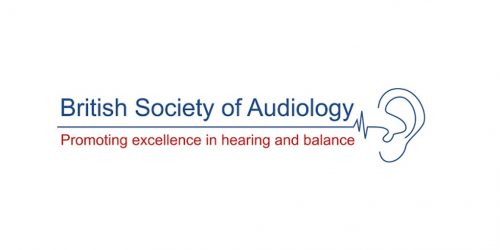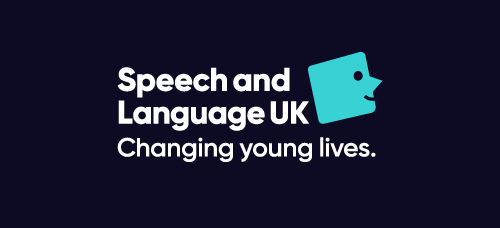Deaf studies, research and the education of deaf pupils
by Susan Gregory
This section of the website considers research in deaf education over the period 1960-2010. Its focus is on how research developed and changed in this period and the factors that influenced this. It does not aim to be a comprehensive account of research carried out and more detailed accounts of research in specific areas is included in the various topic areas of this website.
The focus here is on factors which influenced research. These include changes within society, within medicine, and within general education that influenced research in deaf education.
Research in the 1960s
At the beginning of this period, during the 1960s, most research took place in the centres where teachers were trained – Manchester University where courses started in 1919, and London University which followed in 1965. A great deal of research into deaf education was described in the teachers’ journal, ‘The teacher of the deaf’ which was a magazine reporting on news from schools and practice in deaf education as well as research. Most of the reports were accounts of different approaches to teaching, or the progress of different groups of children, but almost every edition included a research study, involving data collection and reporting findings. By far the most considered topic was aspects of speech production and intelligibility. There was also a number of reports on hearing aids some comparing different systems, others looking at degrees of hearing and learning.
Manchester University has had a long history of involvement in research into issues around deaf education. Key authors in the early days were the Ewings whose first book ‘Speech and the deaf child’ was published in 1954 followed by numerous other publications including ‘Teaching Deaf Children to Talk’ in 1964. The history of research in Manchester is reviewed by Wendy McCracken in the personal accounts section.
Concerns about the education of deaf pupils
During the 1960s, concerns were developing about the education of deaf children. In 1964 the Secretary of State for Education and Science set up a committee to consider ‘the place, if any, of fingerspelling and signing in the education of deaf children’. This reported in 1968 in ‘The Lewis Report’. The report discussed the issues in some depth but, given the ‘lack of evidence from research’ its main recommendations were that more research was needed in a number of areas. The deaf organisations at the time, particularly the British Association of the Deaf and Dumb (BDDA now the BDA) expressed disappointment at the lack of any proposals for action. In particular, they were disappointed at ‘the apparent little weight given in the report to the evidence of the deaf themselves – evidence derived from their own bitter experiences in attempting to cope with the hearing world’ (1970). However, the report did lead to a greater interest in deaf education and sparked off a number of initiatives.
In 1975, the Royal National Institute for the Deaf (RNID) held a conference to look at ‘Methods of communication currently used in the education of the deaf’. Twenty-two presentations were given on this theme by speakers from the UK, but also from the Netherlands, Ireland, the USA and Canada. The presentations ranged widely supporting a number of different perspectives and approaches, and the papers were published in 1976.
Research at Oxford and Nottingham
At this time, a group in Oxford, funded by the Medical Research Council was looking at the progress and performance of deaf pupils in school. The group, led by Reuben Conrad, published its findings in ‘The deaf school child’ in 1979. This was a landmark in deaf education. At the time it was published it had a significant impact in deaf education and remains a key publication. Its striking findings concerned the reading age of deaf school leavers and their lip-reading ability. For the sample as a whole (most of the deaf and partially hearing school-leavers in a particular year) the median reading age was 9, and for those with a hearing loss over 86dB, half were essentially illiterate on leaving school. The study also found the lip-reading skills of the deaf pupils were no better than those of hearing pupils who had had no lipreading training. The impact of Conrad is described by Jim Kyle in the personal accounts section of the website.
In the mid-1970s, partly due to initiatives from Jack Ashley, a British Member of Parliament who had himself become deaf in later life, the British Medical Research Council set up two working parties to consider new possibilities for research into deafness. One of these looked at the social and rehabilitation needs of the deaf and identified a gap between the knowledge and understanding of the development of hearing children within developmental psychology and the then current practice with deaf children. A consequence of this was that the Medical Research Council funded a group at Nottingham University to look at the intellectual and linguistic development of deaf pupils and the implications for education. The Nottingham Deaf Research group began working in 1976. Their work was school-based and a main focus was the way in which teachers interacted with deaf pupils in the classroom and the effects of this. They covered a wide range of topics including mathematical reasoning, and the assessment and teaching of reading. A fuller account is given in Susan Gregory’s contribution in the personal accounts section.
The Warnock Report and the 1981 Education Act
The 1981 Education Act was a consequence of the review of the education of all pupils with special educational needs. In 1978 the Warnock report was published, the findings of which were set out in the 1981 Education Act which was enacted in 1983. The Warnock report recommended that all pupils with special educational needs should, as far as possible, be educated in mainstream schools. As a consequence of this, increasing numbers of deaf pupils attended mainstream rather than special schools, either in units, resourced schools or individually in their local school. While this gained some support within deaf education there was also significant opposition and many research studies were set up to look at the implications this had for deaf children and its consequences, see for example Lynas (1986), Bishop and Gregory (1987) Jarvis, Sinka and Iantaffi (2002). There was also reaction from the wider deaf community who were concerned about the implications for the deaf community of the move away from schools for the deaf which were seen as central to the community. (For further information on this topic see also the section of this deaf history website that examines ‘Schools for the deaf’).
The deaf studies movement In the world beyond schools and education there were other changes which had repercussions for deaf people and deaf education. There were changes in attitudes to disability with ever increasing pressure for disabled people to have equal access in society. Disabled people became more visible and there was more money available for research. Deaf people were significant as the signs which they used to communicate became recognised as a language. This was first described in a paper by Mary Brennan in 1976, which legitimised the system of the signs used through the use of the term British Sign Language. For deaf people, the recognition of their signs as a true language was of major significance.
In the 1970s and 80s a number of Centres for Deaf Studies developed, mainly based in universities, the first two being at Durham and Bristol Universities. Work in Durham started on deaf issues in the early 1970s although they only took the title of Deaf Studies Research Unit (DSRU) in 1986. A major and significant project at Durham was the development of the British Sign Language Dictionary. The work on this had actually begun in the 1970s but had greater impact with the recognition of the signs used in the UK as a full and proper language, see contribution from Susan Gregory in the personal accounts section.
The Centre for Deaf Studies (CDS) in Bristol was established in 1978. It initially came about as a consequence of work of Conrad. Jim Kyle, a researcher with Reuben Conrad, set up the Centre with the objective of understanding more about the development of deaf children and of sign language. However, the centre developed a much broader perspective with ground-breaking work on the Deaf community and its culture, see the contribution from Jim Kyle.
Following the Centres in Durham and Bristol, other centres developed including Central Lancashire (UCLan) which was established in 1993 and University College, London (DCAL) in 2006, see contributions from Lynne Barnes and Bencie Woll.
There were a number of significant developments as consequences of the growth of these deaf centres. These include the greater amount of research into deaf education as well as other topics and the full involvement of deaf people in research. All deaf centres had deaf as well as well hearing people on the staff allowing them to develop courses and offer training which enabled more deaf people to formalise their professional skills. This meant that sign language was increasingly taught by deaf people and more deaf people became involved in the education of deaf pupils as teachers and classroom assistants. However, some deaf centres including Durham and Bristol, closed in the early years of the twenty first century for a number of complex reasons some of which are discussed by Jim Kyle, Graham Turner and Alys Young in the personal experience part of this section.
The developing role of universities and the development of academic journals
By this time though there was a growth in universities carrying out research into deaf education. In the 1990s the Universities offering training for teachers who wished to become Teachers of the Deaf (Universities of Birmingham, Leeds, Manchester, Hertfordshire) became more involved. This was due to the increasing emphasis on research in universities in general as funding became more dependent on their research profile. There developed an expectation that university lecturers should have a PhD.
The 1990s and 2000s saw the development of two journals the main topic of which was deaf education, probably as a consequence of the greater focus on research into this area. The journal ‘The teacher of the deaf’ had a long a distinguished life and it developed further when Clare Galloway became journal editor in 1996. She saw an important role for it and from 1997 the journal was produced and distributed separately from the BATOD magazine and took the new title Deafness and Education (later Deafness and Education International). The Journal of Deaf Studies and Deaf Education started in 2005, developed in the USA though published by Oxford University Press. Both these have become established and respected journals with formal selection and reviewing procedures.
Developments in medicine and hearing aid technology
A final last influence on research and deaf education in the period we are considering is the impact of cochlear implants. Cochlear implants take place in a medical context and are subject to influences within medicine. One of these is evidence-based practice, the requirement that a medical procedure must demonstrate it is of value.
The early studies of outcomes from cochlear implantation focused very much on speech perception and speech intelligibility, for obvious reasons – that they were easy to measure and could be seen as a direct consequence of implantation. Archbold (2010) describes how, when the Nottingham Cochlear Implant Programme was set up, a database was also included as part of the development as ‘It was considered vital to include … the database in order that outcomes could be related to the personal data held on children, and also to enable cost effectiveness studies to be carried out, including measures of time spent with the child, the technology used and the professional input.’(p45).
Her book (Archbold 2010) describes the studies carried out by the Nottingham Cochlear Implant Team which she led for some years. It is clear from this that a much wider notion of success has had to be adopted, but also the measurement criteria have still had to be rigorously imposed and validated. The implications of this medical approach for other research areas in deaf education and the possible consequences of this remain to be seen.




